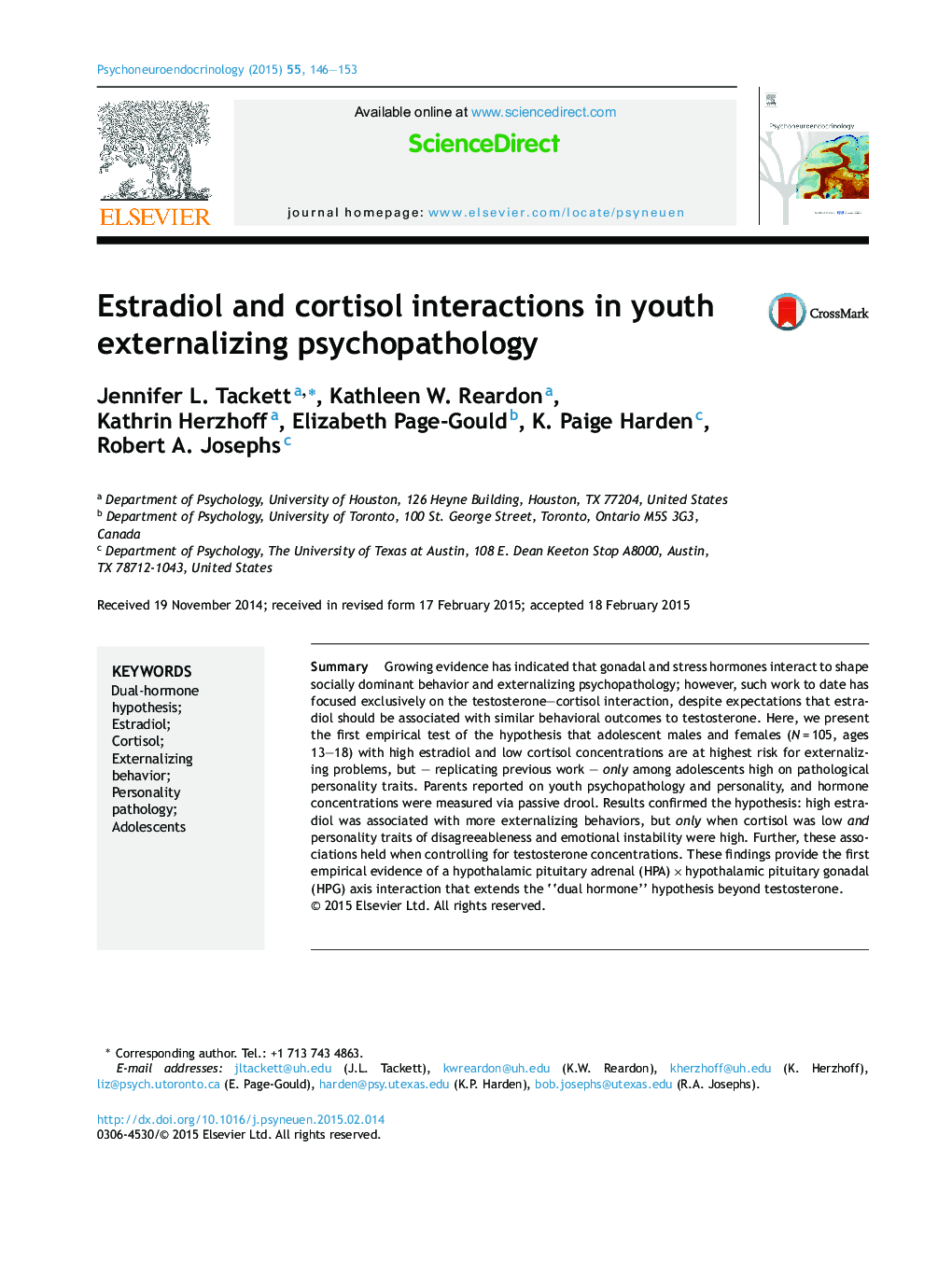| Article ID | Journal | Published Year | Pages | File Type |
|---|---|---|---|---|
| 6818961 | Psychoneuroendocrinology | 2015 | 8 Pages |
Abstract
Growing evidence has indicated that gonadal and stress hormones interact to shape socially dominant behavior and externalizing psychopathology; however, such work to date has focused exclusively on the testosterone-cortisol interaction, despite expectations that estradiol should be associated with similar behavioral outcomes to testosterone. Here, we present the first empirical test of the hypothesis that adolescent males and females (NÂ =Â 105, ages 13-18) with high estradiol and low cortisol concentrations are at highest risk for externalizing problems, but - replicating previous work - only among adolescents high on pathological personality traits. Parents reported on youth psychopathology and personality, and hormone concentrations were measured via passive drool. Results confirmed the hypothesis: high estradiol was associated with more externalizing behaviors, but only when cortisol was low and personality traits of disagreeableness and emotional instability were high. Further, these associations held when controlling for testosterone concentrations. These findings provide the first empirical evidence of a hypothalamic pituitary adrenal (HPA)Â ÃÂ hypothalamic pituitary gonadal (HPG) axis interaction that extends the “dual hormone” hypothesis beyond testosterone.
Related Topics
Life Sciences
Biochemistry, Genetics and Molecular Biology
Endocrinology
Authors
Jennifer L. Tackett, Kathleen W. Reardon, Kathrin Herzhoff, Elizabeth Page-Gould, K. Paige Harden, Robert A. Josephs,
